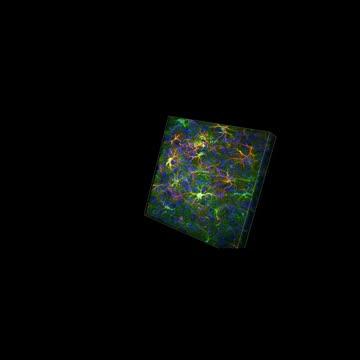
VIDEO: This is video with a 3D reconstructed confocal image of reactive astrogliosis in the cortex of a mouse following diffuse traumatic brain injury. GFP – green; GFAP – red; Dapi – blue. view more
Researchers have identified a cellular response to repeated concussions that may contribute to seizures in mice like those observed following traumatic brain injury in humans. The study, published in JNeurosci, establishes a new animal model that could help improve our understanding of post-traumatic epilepsy.
Stefanie Robel, Oleksii Shandra and colleagues induced mild traumatic brain injury in mice to mimic blows to the head that result in human concussions. A unique population of astrocytes responded to these injuries and the researchers observed spontaneous recurrent seizures in some mice within one month. These results highlight the role of astrocytes in the development of epilepsy following the most common type of traumatic brain injury in humans.
###
Article: Repetitive Diffuse Mild Traumatic Brain Injury Causes an Atypical Astrocyte Response and Spontaneous Recurrent Seizures
DOI: https:/
Corresponding author: Stefanie Robel (Virginia Tech Polytechnic Institute and State University, Roanoke, USA), srobel@vt.edu
About JNeurosci
JNeurosci, the Society for Neuroscience’s first journal, was launched in 1981 as a means to communicate the findings of the highest quality neuroscience research to the growing field. Today, the journal remains committed to publishing cutting-edge neuroscience that will have an immediate and lasting scientific impact, while responding to authors’ changing publishing needs, representing breadth of the field and diversity in authorship.
About The Society for Neuroscience
The Society for Neuroscience is the world’s largest organization of scientists and physicians devoted to understanding the brain and nervous system. The nonprofit organization, founded in 1969, now has nearly 37,000 members in more than 90 countries and over 130 chapters worldwide.
Disclaimer: AAAS and EurekAlert! are not responsible for the accuracy of news releases posted to EurekAlert! by contributing institutions or for the use of any information through the EurekAlert system.

